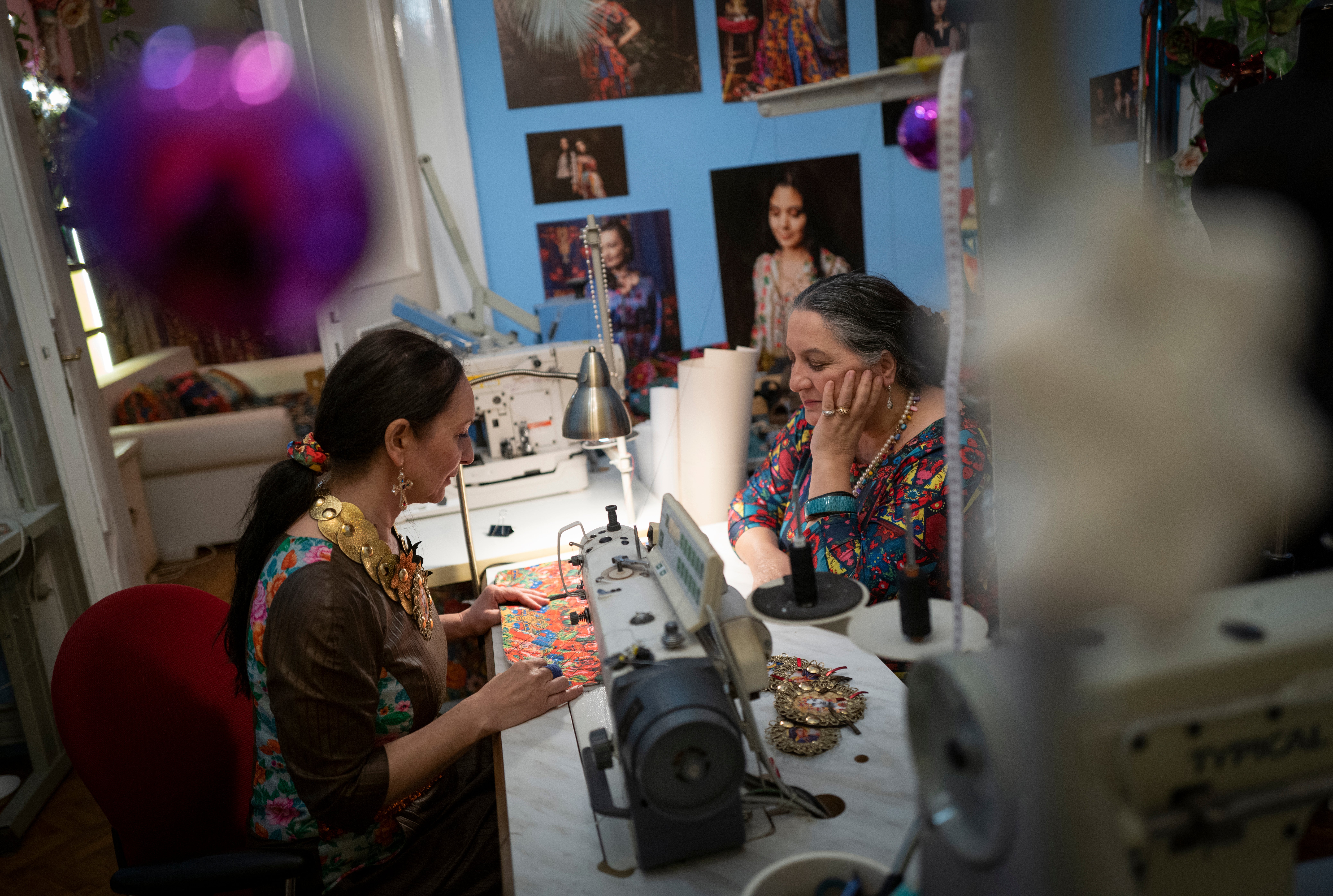Hungarian fashion studio builds Roma cultural prestige
A fashion studio in Hungary is challenging the centuries-old stereotypes faced by the country’s Roma minority and asserting a place at the table of high culture for the historically marginalized group

Your support helps us to tell the story
From reproductive rights to climate change to Big Tech, The Independent is on the ground when the story is developing. Whether it's investigating the financials of Elon Musk's pro-Trump PAC or producing our latest documentary, 'The A Word', which shines a light on the American women fighting for reproductive rights, we know how important it is to parse out the facts from the messaging.
At such a critical moment in US history, we need reporters on the ground. Your donation allows us to keep sending journalists to speak to both sides of the story.
The Independent is trusted by Americans across the entire political spectrum. And unlike many other quality news outlets, we choose not to lock Americans out of our reporting and analysis with paywalls. We believe quality journalism should be available to everyone, paid for by those who can afford it.
Your support makes all the difference.A fashion studio in Hungary is challenging the centuries-old stereotypes faced by the country's Roma minority, and asserting a place at the table of high culture for the historically marginalized group.
Established by sisters Erika and Helena Varga in 2010, the Romani Design fashion studio has the declared mission of using fashion and applied arts to build the socio-cultural prestige of the Roma community, and to reestablish Roma culture in a modern context.
“We were one of the first brands that actually gave the answer to how to rebuild (Roma) traditions in a contemporary, modern way,” said Erika Varga, co-founder of Romani Design.
The Roma are Hungary's largest minority, and represent as much of 10% of the population in the Central European country. Like their counterparts throughout Europe Hungary's Roma are often the subjects of social and economic exclusion, and face discrimination, segregation and poverty.
Present in Hungary since the 15th century, many of the Roma's traditions are deeply ingrained in broader Hungarian culture. Yet many of their unique customs and occupations — as well as their language, Romani — have been slowly dying out after centuries of official and unofficial marginalization.
Before starting Romani Design, the Varga sisters worked as jewelry makers and designers. But seeing that the social acceptance long sought by their community had remained elusive, they worried that valuable Roma traditions were being lost, and excluded from conceptions of what constitutes high culture.
“We wanted to sensitize the social majority, including the social elite,” Erika said. “This was important because it’s the social elite that dictates who is valuable and what position they can occupy in the social hierarchy. ... We also wanted to communicate messages to our own community that we don’t have to give up our traditional values.”
Reutilizing the floral patterns, colorful fabrics and depictions of the Virgin Mary prevalent in traditional Roma dress and folklore, Romani Design creates modern clothing, jewelry and accessories that place Roma cultural traditions into a contemporary context.
Helena, the younger of the sisters who oversees the design of their products, said many of the dresses and accessories are reflections on lived experiences she has had through growing up Roma in Hungary.
“When I design, I absolutely live my own Gypsy identity, and my roots are absolutely here in my heart and soul,” Helena said, using a term for the Roma seen as pejorative in some places but commonly used by Roma in Hungary. "I've seen how (Roma communities) live, what they wear, what kinds of houses they live in and what the interior design is like ... These memories and experiences are completely embedded in my mind when I design something.”
While some advocacy groups in Hungary push for Roma equality and social inclusion by representing elements of Roma culture like folk music and dance, the Varga sisters say that fashion is one of the most powerful means of bridging the gap between their culture and the rest of society.
“Fashion, the way we dress, the clothes we wear on our bodies can send a message so fast and so intense that it reaches its target audience very, very quickly," Helena said. "It’s very effective.”
In the world of designer fashion, choosing to shop at Romani Design represents a conscious statement of values, Helena said, and their clients usually buy their products with the intent of expressing their views on inclusion.
Most clients of the studio are "people who want more from fashion,” Erika said.
“They want to be able to express their personality as much as possible, to shape their immediate environment, and at the same time to represent values that are important in their personal lives and communities, such as the values of multiculturalism,” she said.
Six dresses by Romani Design are currently on display at an exhibition in the Museum of Applied Arts in Hungary's capital, Budapest
The rotating exhibition, “In Circulation,” has artists choose items from the museum’s permanent collection and create their own works inspired by them. After being displayed, the new contemporary works become part of the museum’s collection — securing them for posterity to be reflected upon by coming generations.
Judit Horvath, the head of the museum's contemporary design department, said it was a mission of the museum to “thematize social problems,” and that Romani Design's appearance in the exhibition had done so successfully.
“In the context of this exhibition it was clear what the social problem is that we want to thematize,” Horvath said. ”What is this problem? The conflict, fear, discord and anger that often exists between Roma and non-Roma communities ... things that we wish were not there."